The Cupra Born and Volkswagen ID.3 are like the results of two different chefs creating the same meal.
In terms of ingredients, the two cars share their motors, batteries, platform and infotainment screens, among other components. But the Cupra Born has been prepared with a bit more seasoning than the ID.3 – it’s more fun to drive and has tasty copper details. But which one is right for your palate?
Cupra Born vs VW ID.3 compared
| Cupra Born | Volkswagen ID.3 |
Pros:
| Pros:
|
Cons:
| Cons:
|
Styling and design
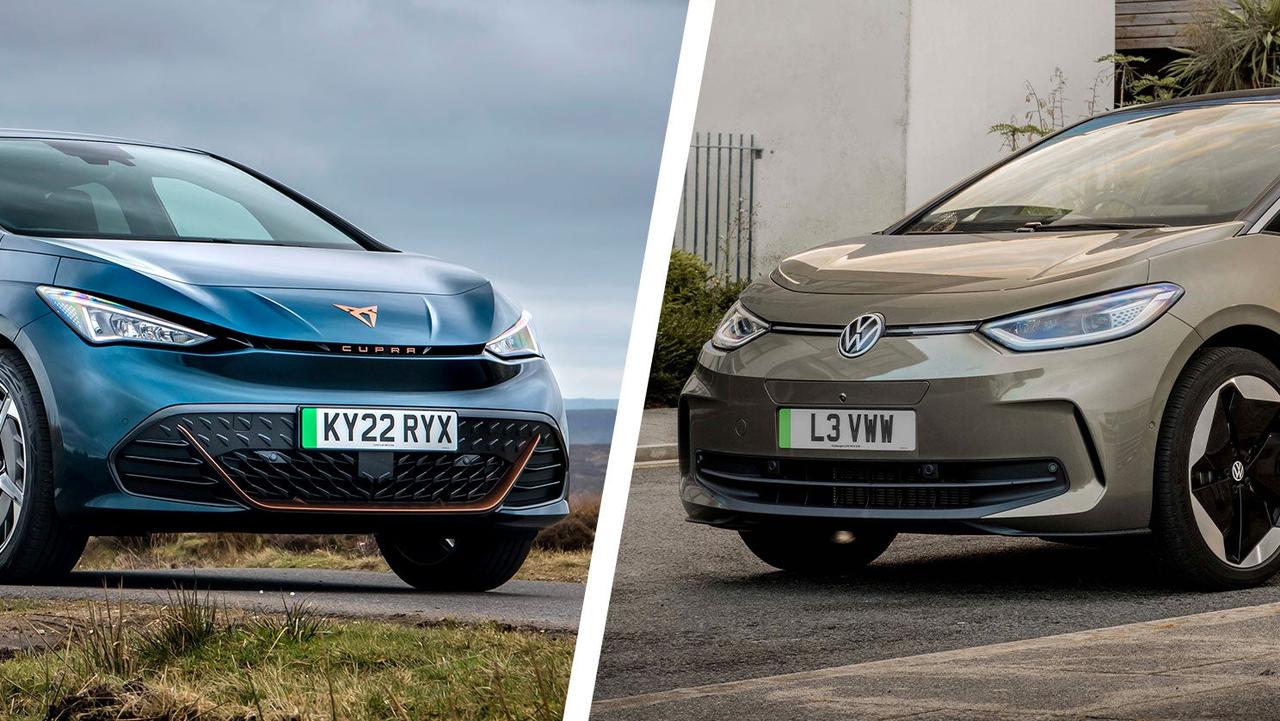
Everything between the wheels is shared between the two cars; you’ll spot clear changes at each end, though. Volkswagen’s effort has a clean, modern design that’s a little smoother looking, while the Cupra has a lower nose and more intricate styling flicks. There’s a rear bumper designed to look like a race car’s diffuser, and a full-width light bar. The Cupra also gets alloy wheels as standard and a copper grille insert.
Interior
It’s a similar story on the inside: both cars feature the same hardware and share the majority of a dashboard, with a petite 5.3-inch driver’s display behind the wheel and a vast tablet-like touchscreen. Whereas the ID.3 gets an open centre console, the Born gets a copper-lined closed storage area.
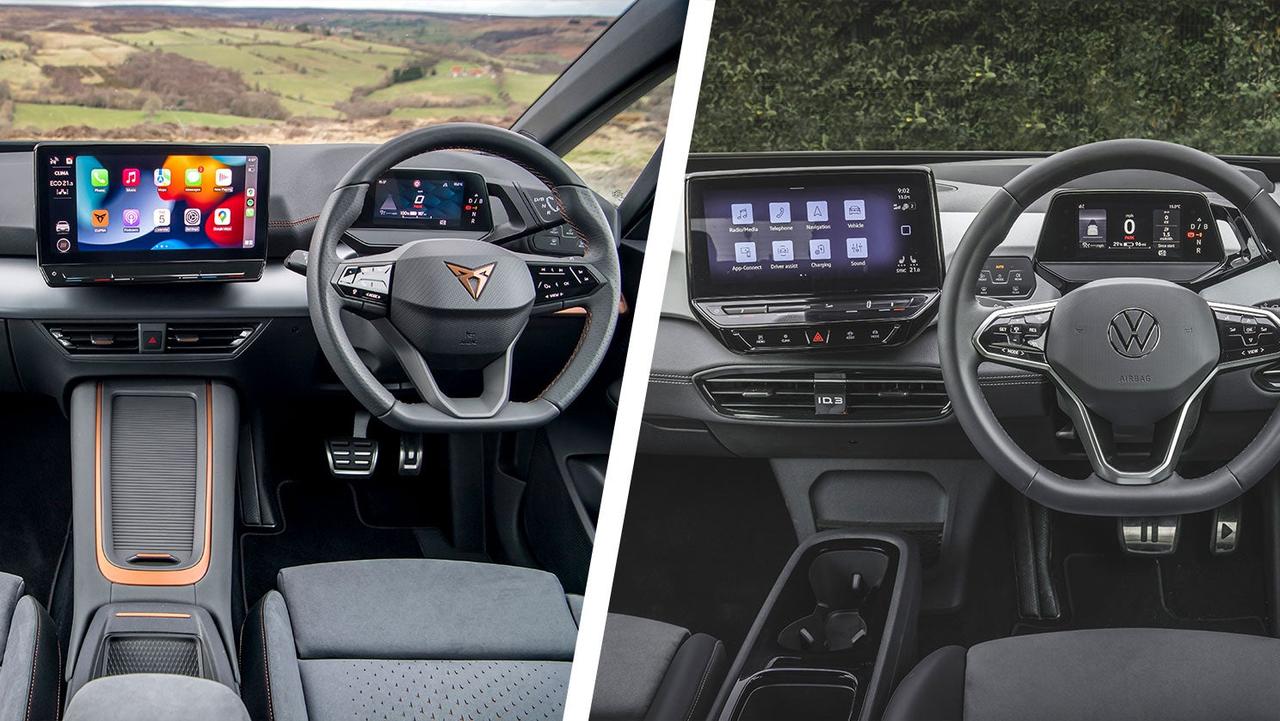
Both have some unusual ergonomic quirks, such as a lonely pair of window switches that control both front and back windows, and there are fiddly touchpads on the steering wheel. The infotainment system in pre-2024 versions of both cars can be confusing and slow to respond at times. A new infotainment screen in newer cars is more configurable and easier to use.
The Cupra manages to feel a little more premium than the ID.3, with more textured materials and a nicer feeling steering wheel. In comparison, the ID.3 risks feeling a bit drab inside.
Dimensions and practicality
| Cupra Born | Volkswagen ID.3 | |
| Length | 4,322mm | 4,261mm |
| Height | 1,537mm | 1,562mm |
| Width (inc mirrors) | 2,070mm | 2,070mm |
| Boot space (seats up/down) | 385 litres | 385 litres |
Given how much is shared between these cars, it’s not surprising that there’s nothing in it when it comes to practicality. The Cupra is marginally longer due to its different bumpers, and fractionally lower because of its sports suspension.
Both cars make the most of their electric-only platform, with the wheels pushed right out to the corners to maximise passenger space. As a result, the ID.3 and Born offer noticeably more rear-seat space than the similarly sized Volkswagen Golf.
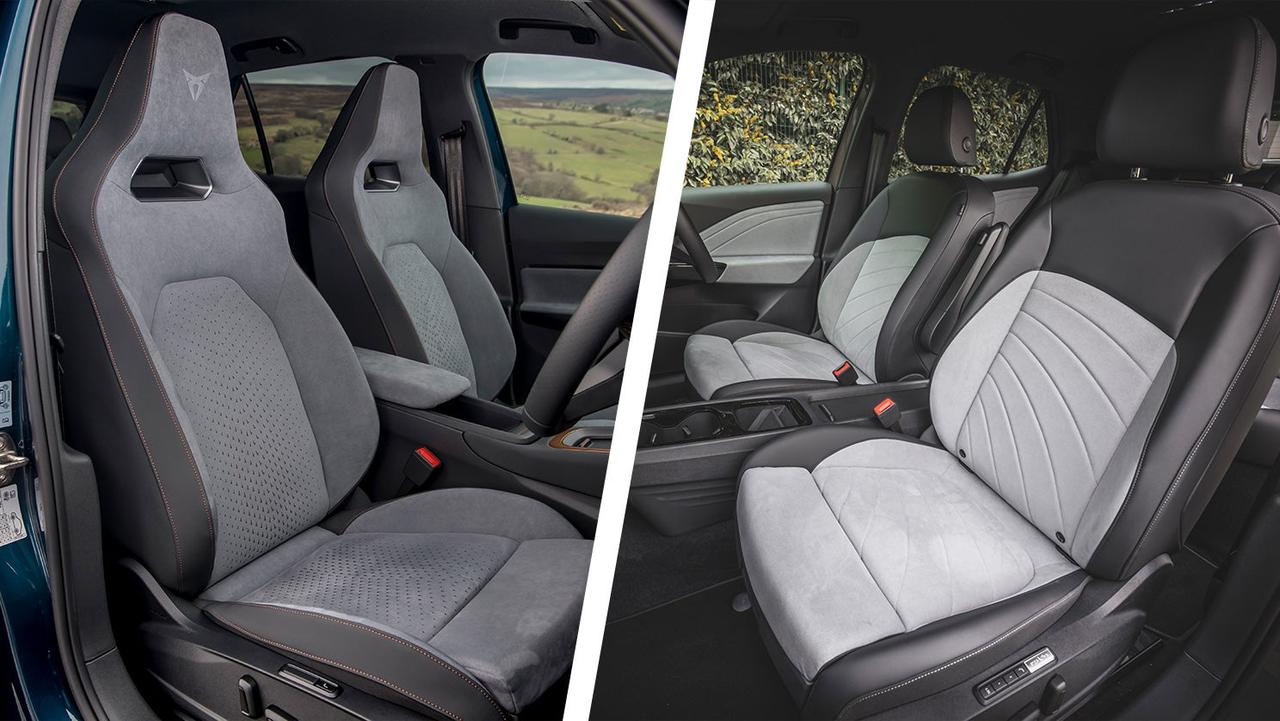
The boot is almost exactly the same size as the Golf. It’s about average for an electric hatchback – more than the MG4 but less than the Renault Megane E-Tech – and will be enough for a weekly shop or a large pushchair.
Range and performance
When they launched, the ID.3 and Born offered the same 58kWh and 77kWh batteries, with a 204hp rear-mounted e-motor and a 0-62mph time of 7.3 seconds. Latterly, the Born gained e-Boost versions, which give you an instant shot of extra power – good for a half-second reduction in the 0-62mph time. Now, the e-Boost option is standard on the Born, but it’s not offered at all on the ID.3.
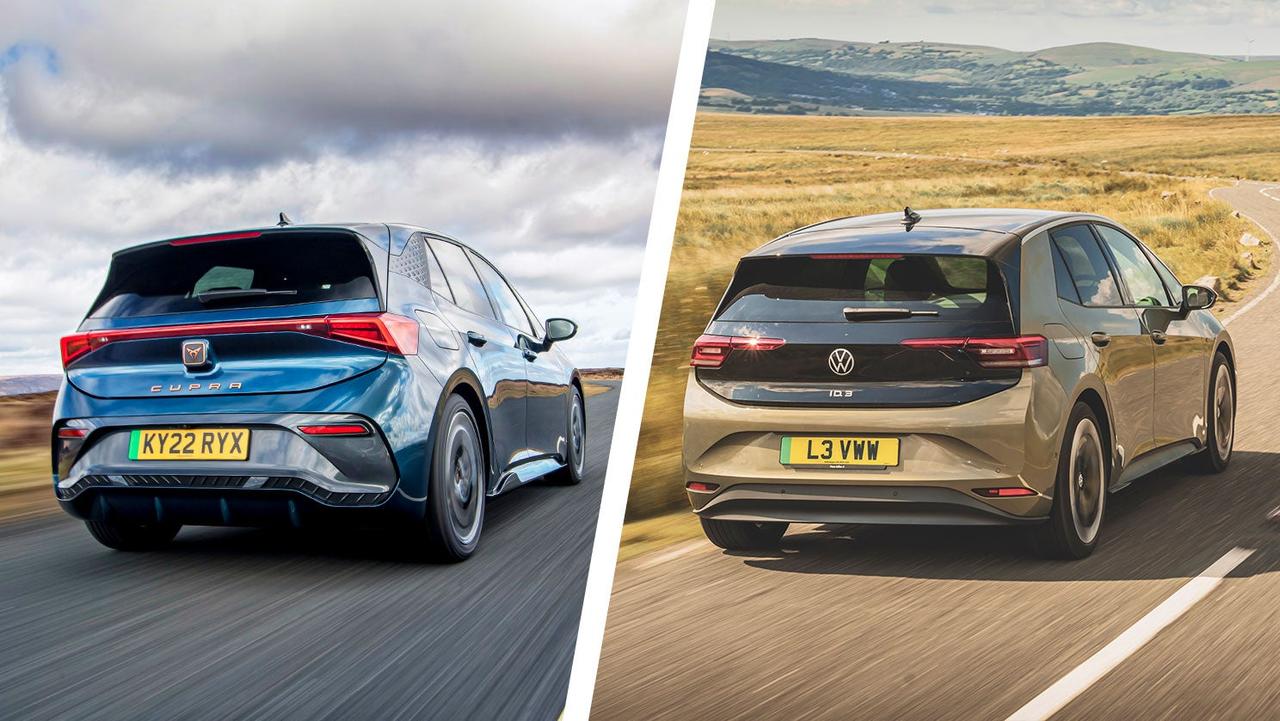
Meanwhile, the ID.3 has offered smaller batteries over its lifespan. You’ll find a 45kWh battery on some used models and, more recently, a 52kWh option – good for a maximum theoretical range of 216 and 240 miles respectively. The 58kWh battery boosts that to 268 miles, while the 77kWh battery offers up to 346 miles.
The Born always felt like it could do with a more powerful version, and now one’s available. Called the VZ, it gets a 79kWh battery and a 326hp motor. Zero-to-62mph takes a hot-hatch-like 5.6 seconds. In the VW camp, the new ID.3 GTX also gets this combination, but the Cupra is a bit more thoroughly overhauled and more fun to drive.
Value and reliability
Clearly, there won’t be any major differences in reliability – and the relative simplicity of an electric powertrain means there’s less to go wrong versus a petrol or diesel car.
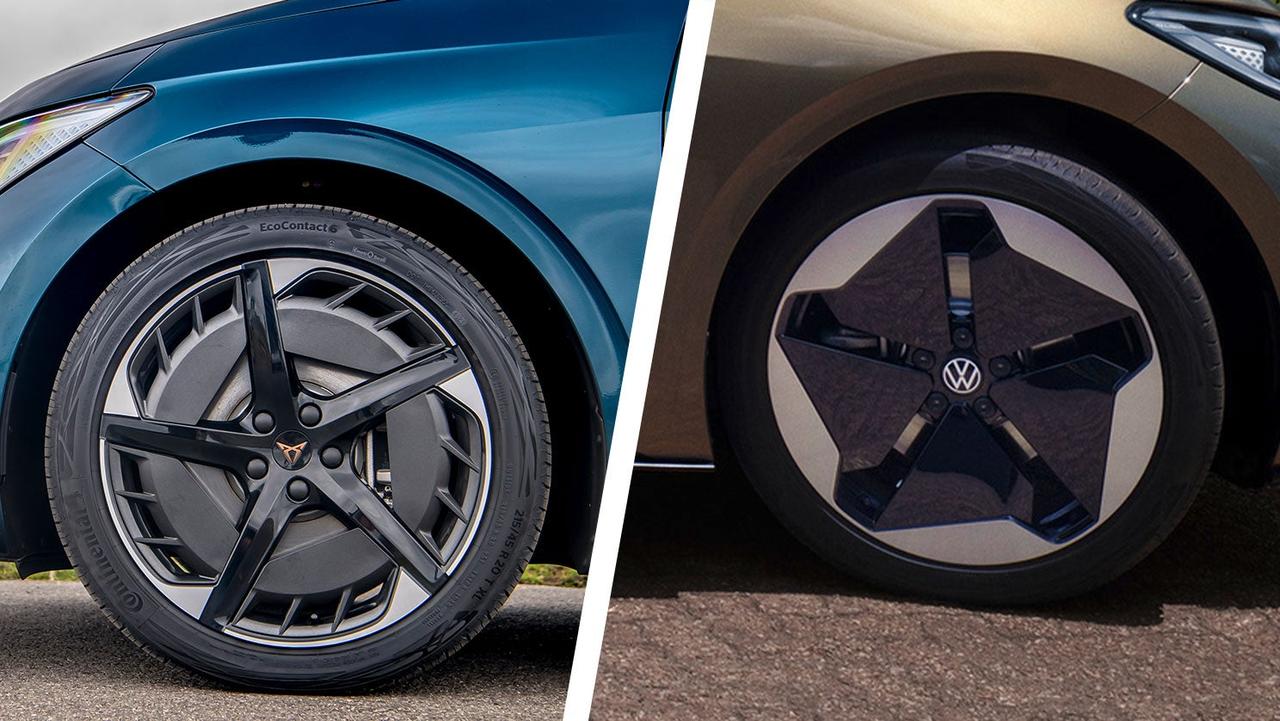
But the ID.3 comes up trumps on value. Partly because it’s been out longer than the Born and partly because the ID.3 offers smaller batteries and less well-equipped trim levels. You’ll definitely pay a premium for the Born’s sportier look and feel.
Which is best?
Despite looking very similar and using a lot of the same parts, there are tangible differences between the Cupra Born and VW ID.3. The Born feels a little more premium whereas the ID.3 is a cheaper option – often undercutting a Golf with similar age and mileage. If you’re not too fussed about a sporty driving experience we’d save some money and go with the ID.3, although the Born does enough to justify its higher prices. Tough decision!
For more info, read our Cupra Born review and Volkswagen ID.3 review. If you’ve made up your mind, shop used Cupra Born cars or used Volkswagen ID.3 cars for sale.



































